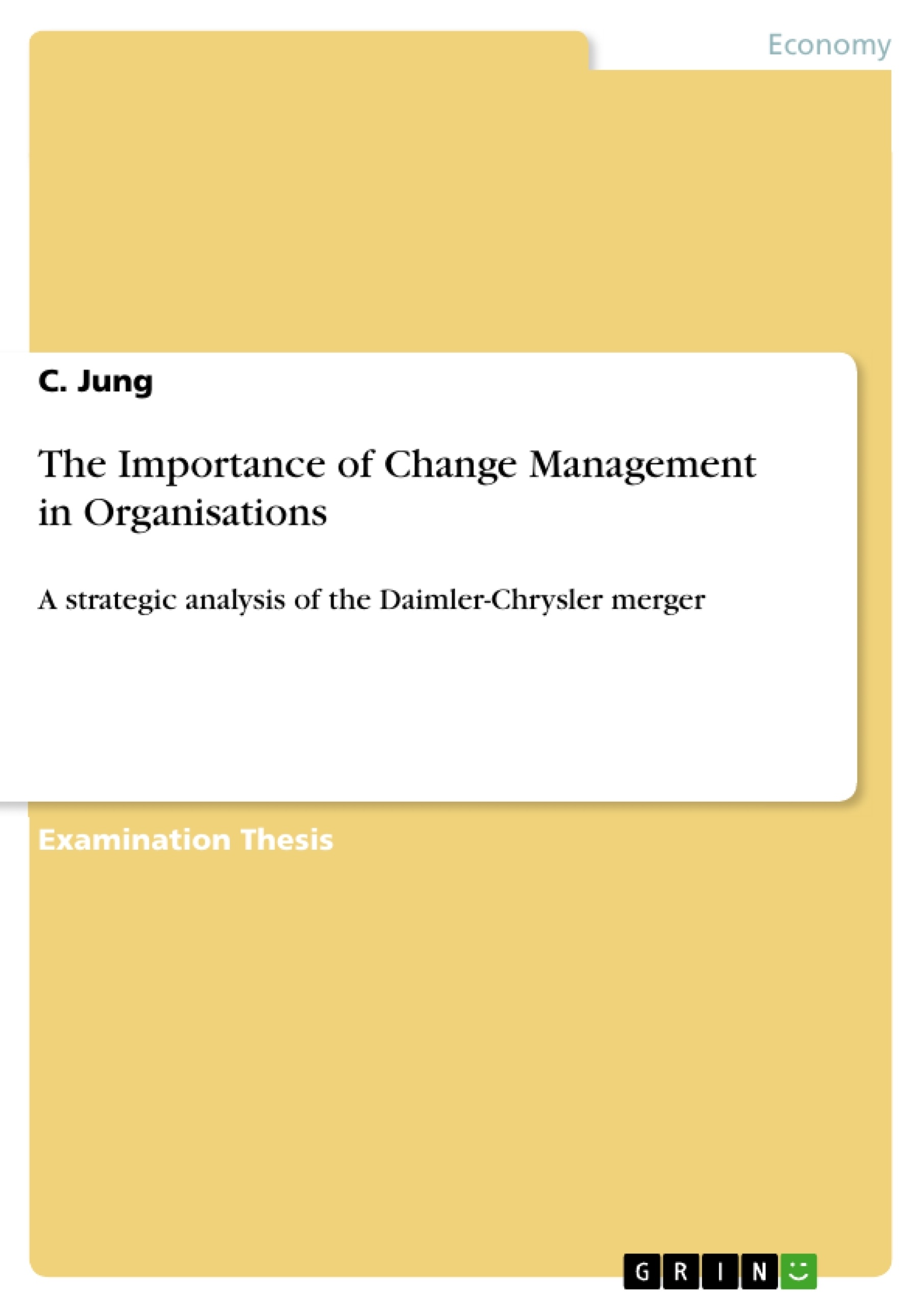1. Introduction
The process of globalization and the intensification of competition, forces modern organizations to adapt themselves quickly and flexibly to changing market conditions. The concept of change by the change management is hence primarily implemented due to economic downturns, economic growth issues, political, societial or technical general conditions or due to the fact that some organizations do not have sufficient internal strength to sustain its position (Lauer, 2010).
By virtue of the merger between the Daimler-Benz AG and the Chrysler Corporation in 1998, the newly created concern DaimlerChrysler tried to build new organizational structures for more efficient competitiveness to expand into new markets and to reinforce it’s financial position, hence taking advantage from a “2+2=5 effect” (Cartwright and Cooper, 1992). Both companies were trying to move from a coordination growth stage to a collaboration growth stage (Clarke, 1994) by the establishment of one single operating entity which as we will see later on, led to the failure of DaimlerChrysler during its “Red Tape crisis” (Greiner, 1972). Goal of the change management was to implement a corporate transformation (Dunphy et al., 1993) by finding the best compromise for both companies in regard to the organizational structure, culture, firm philosophy, operational processes as well as the integration of employees (Waller, 2001).
However, in the course of time a strong antagonism and resistance to the merger arose in particular amongst former Chrysler employees. A study from IBM Global Business Services in 2008 shows that only 41% of all change projects achieve its goals, while 44% only achieve partially the aspired aims and 15% don’t lead to achievement or are abandoned ahead of schedule. The problems of change management adjustments are mostly justified by failures in the acquaintance with the factor human being (IBM Global Business Services, 2008); the partnership between Daimler-Benz and Chrysler also failed due to a primary focus on hard data such as e.g. financial information while forgetting the focus on soft (Cartwright and Cooper, 1995) data namely the support of an organizational culture establishment.
The following report critically evaluates the changes occuring in times of an international merger by the example of the 1998 merger between Daimler-Benz and Chrysler. Beginning with an explanation of the triggers and reasons for the necessity of change
List of contents
1. Introduction
2. The Daimler/Chrysler merger
3. Two cultures - one company
3.1 The Change Management
3.2 Lewin’s Model of Change
3.3 Cultural dimensions
4. Recommendation
5. Conclusion
6. References
6.1 Literature references
6.2 Internet references
7. Appendices
7.1 Appendix 1
7.2 Appendix 2
7.3 Appendix 3
- Arbeit zitieren
- C. Jung (Autor:in), 2011, The Importance of Change Management in Organisations, München, GRIN Verlag, https://www.grin.com/document/183144
-

-

-

-
Laden Sie Ihre eigenen Arbeiten hoch! Geld verdienen und iPhone X gewinnen. -

-
Laden Sie Ihre eigenen Arbeiten hoch! Geld verdienen und iPhone X gewinnen. -

-
Laden Sie Ihre eigenen Arbeiten hoch! Geld verdienen und iPhone X gewinnen. -

-
Laden Sie Ihre eigenen Arbeiten hoch! Geld verdienen und iPhone X gewinnen. -

-
Laden Sie Ihre eigenen Arbeiten hoch! Geld verdienen und iPhone X gewinnen. -

-
Laden Sie Ihre eigenen Arbeiten hoch! Geld verdienen und iPhone X gewinnen. -

-
Laden Sie Ihre eigenen Arbeiten hoch! Geld verdienen und iPhone X gewinnen.

